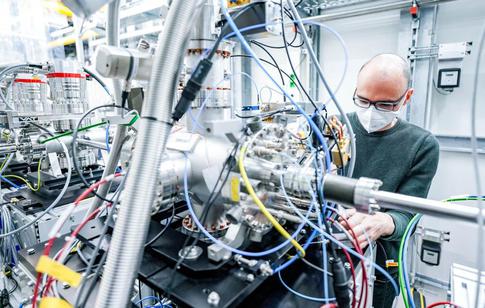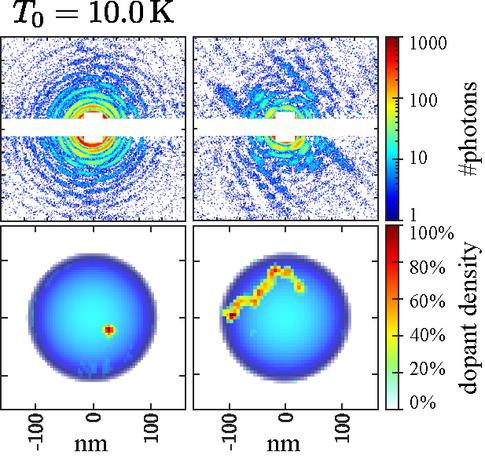XFEL: Helium droplets for studies of nanostructures
Helium droplets for studies of nanostructures

The SQS instrument at European XFEL. Copyright: European XFEL/Axel Heimken
Using a conical nozzle, an international research team has generated vortex-free droplets of superfluid helium that are larger than any created before. The droplets are big enough to be resolved in X-ray diffraction images, making them ideal for studying the self-assembly of a wide range of nanostructures forming inside a superfluid environment.
A superfluid, such as very cold liquefied helium, flows without any internal friction. Droplets of superfluid helium therefore provide a perfect environment for researchers to investigate the formation of self-organized nanostructures made from various dopant materials, i.e. atoms and molecules specifically inserted into the droplets. However, the occurrence of vortices inside the droplets can hinder the assembly of such nanostructures, as many dopants are easily attracted to them. Now, a team of scientists led by researchers from TU Berlin has used a special nozzle at the European XFEL’s SQS instrument to create swirl-free helium nanodroplets and explore the size range in which they can be produced.
“Our conical nozzle enabled us to generate vortex-free droplets from the condensation of expanding helium gas that contain up to a thousand times more helium atoms than possible with previous methods,” explains Rico Tanyag, previously at TU Berlin in Germany and now at Aarhus University in Denmark, one of the principal investigators of the experiment. “This large size allows us to image both the droplets and the dopant nanostructures inside them using the ultrashort pulses of X-ray free-electron lasers such as the European XFEL,” adds Daniela Rupp from ETH Zürich in Switzerland, the other main proposer of the study. “Our experiment thus paves the way for exploring in atomic detail how such nanostructures form.”
Using a technique called X-ray coherent diffractive imaging on helium droplets doped with xenon atoms, the scientists found that single compact xenon structures, which are associated with vortex-free formation, prevailed up to a droplet size of a hundred million helium atoms—a thousand times more than previously feasible. Larger droplets, on the other hand, contained xenon filaments, indicating the presence of vortices that disturbed the structure formation.

“The instrumentation available at SQS and the excellent performance of the SASE3 undulator, which supplies the instrument with soft X-rays, provide an ideal basis for these studies,” says Michael Meyer, leading scientist of the SQS instrument. The new source of helium nanodroplets was developed in a collaboration between SQS and the group of Thomas Möller at TU Berlin and is now available for the entire scientific community at SQS. “The advancement could enable us to produce helium droplets of precise sizes on demand, tailored to specific experiments,” adds Anatoli Ulmer from TU Berlin, the first author of the publication, who designed the source. This capability would make it possible for researchers to systematically explore the self-assembly of a wide range of dopant materials, including their evolution with varying numbers of particles, and a broad spectrum of intermolecular forces of attraction.
Reference:
“Generation of Large Vortex-Free Superfluid Helium Nanodroplets”, Anatoli Ulmer et al.
Phys. Rev. Lett. 131, 076002 (2023), DOI:10.1103/PhysRevLett.131.076002
Contact:
Dr Michael Meyer
Tel: +49-40-8998-5614
E-mail: michael.meyer@xfel.eu
Dr Bernd Ebeling
Tel: +49-40-8998-6921
E-mail: bernd.ebeling@xfel.eu
